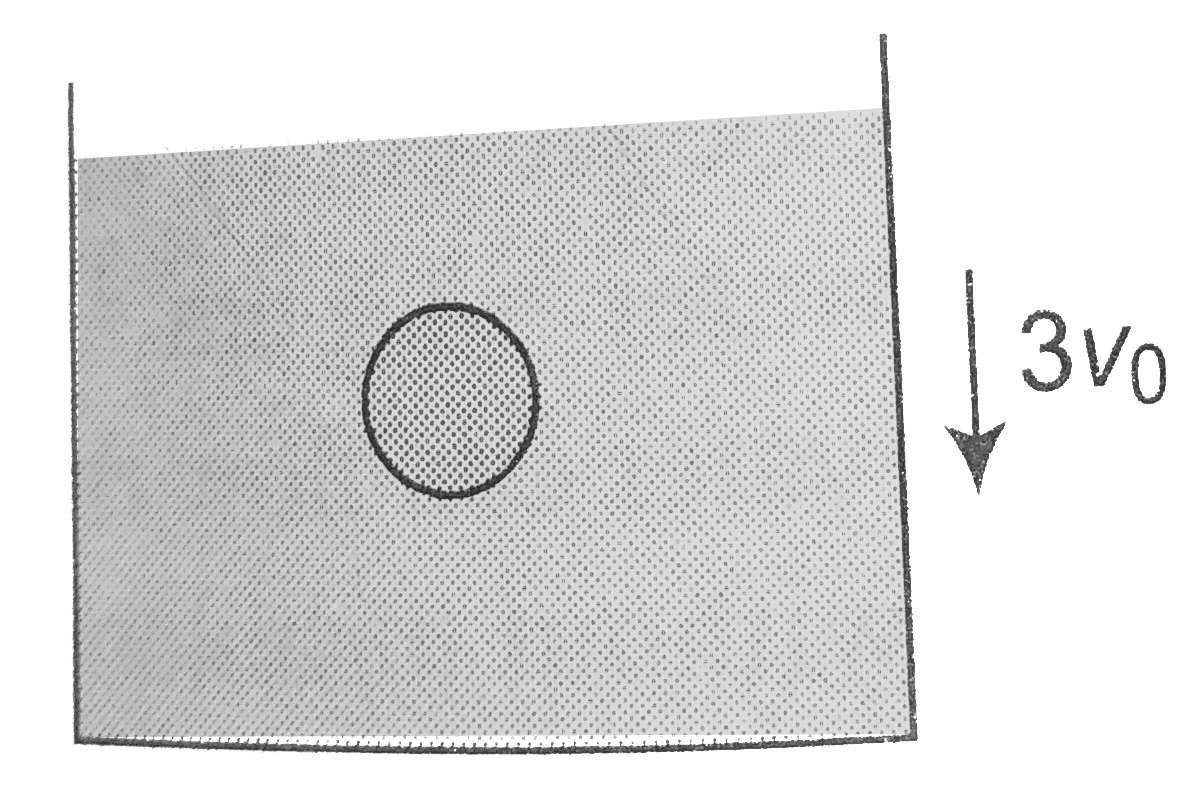When a solid moves through a liquid, the liquid opposes the motion with a force F. The magnitude of F depends on the coefficient of viscosity η of the liquid, the radius r of the sphere and the speed v of the sphere. Assuming that F is proportional to different powers of these quantities, guess a formula for F using the method of dimension.Solution in Tamil
Suppose the formula is F=kηarbvc.
Then, MLT−2=[ML−1T−1]aLb(LT)c
=MaL−(a+b+c)T−a−c
Equating the exponents of M,L and T from both sides, <br> a=1<br> -a+b+c=1<br> -a-c=-2<br>Solv∈gthesea=, b=1, and c=1.<br>solv∈gthesea=1, b=1, and c=1.<br>Thus,theforμlaforf is F=Kηrv.
Topper's Solved these Questions
- INTRODUCTION TO PHYSICSBOOK - HC VERMACHAPTER - INTRODUCTION TO PHYSICSEXERCISE - Question for short Answer
7 Videos
- INTRODUCTION TO PHYSICSBOOK - HC VERMACHAPTER - INTRODUCTION TO PHYSICSEXERCISE - Objective 1
6 Videos
- HEAT TRANSFERBOOK - HC VERMACHAPTER - HEAT TRANSFEREXERCISE - EXERCIESE
55 Videos
- KINETIC THEORY OF GASESBOOK - HC VERMACHAPTER - KINETIC THEORY OF GASESEXERCISE - All Questions
120 Videos
Similar Questions
The metre is defined as the distance travelled by ligh in 1299,792,458 second. Why didn't people choose some easier number such as 1300.000.000 second?
View SolutionWhich one of the following sets cannot–––––––– enter into the list of fundamental quantities?
View SolutionA uniform slab of dimension 10cm×10cm×1cm is kept between two heat reservoir at temperatures 10∘C and 90∘C. The larger surface areas touch the reservoirs. The thermal conductivity of the material is 0.80Wm−1C−1 . Find the amount of heat flowing through the slab per minute.
View SolutionCalculate the rms speed of nitrogen at STP (pressure =1 atm and temperature =00C. The density of nitrgoen in these conditions is 1.25kgm−3
View SolutionThe viscous force F on a sphere of radius a moving in a medium with velocity v is given by F=6πnov. The dimension of eta are
View Solution
A container filled with viscous liquid is moving vertically downwards with constant speed 3v0. At the instant shown, a sphere of radius r is moving vertically downwards (in liquid) has speed v0. The coefficient of viscosity is η. There is no relative motion between the liquid and the container. Then at the shoen instant, The magnitude of viscous force acting on sphere is
View SolutionThe force F on a sphere of radius r moving in a medium with velocity v is given by F=6πηrv. The dimensions of η are
View SolutionThe viscous force 'F' acting on a small sphere of rtadius 'r' moving with velocity v through the liquid is gib=ven by F= 6πnrv. Calculate the dimensions of n , the cofficent of viscosity.
View SolutionA small metal sphere of radius a is falling with a velocity υ through a vertical column of a viscous liquid. If the coefficient of viscosity of the liquid is η, then the sphere encounters an opposing force of
View Solutionकिसी द्रव में नियत वेग से गिरते हुए गोले पर लगने वाला बल F, गोले कि त्रिज्या r, इसके सीमान्त वेग v तथा द्रव के श्यानता गुणांक η पर निर्भर करता है । विमीय विधि द्वारा F के लिए सूत्र ज्ञात कीजिए ।
संकेत : F=Kηrv,K=6π रखने पर, F=6πηrv.
View Solutionजब एक गोलाकार वस्तु किसी द्रव में चलती है तो द्रव उसपर गति की विपरीत दिशा में एक बल लगता है। इस बल का परिमाण F, द्रव का श्यानता गुणांक (coefficient of viscosity) η, गोले की त्रिज्या r तथा गोले के वेग v पर निर्भर करता है। विमाओं की सहायता से F के लिए η, v तथा r में सूत्र प्राप्त करे।
View SolutionWhen a liquid flows in a tube, there is relative motion between adjacent layers of the liquid. This force is called the viscous force which tends to oppose the relative motion between the layers of the liquid. Newton was the first person to study the factors that govern the viscous force in a liquid. According to Newton’s law of viscous flow, the magnitude of the viscous force on a certain layer of a liquid is given by F = - eta A (dv)/(dx) where A is the area of the layer (dv)/(dx) is the velocity gradient at the layer and eta is the coefficient of viscosity of the liquid. If f is the frictional force between a solid sliding over another solid, and F is the viscous force when a liquid layer slides over another, then :
View SolutionWhen a liquid flows in a tube, there is relative motion between adjacent layers of the liquid. This force is called the viscous force which tends to oppose the relative motion between the layers of the liquid. Newton was the first person to study the factors that govern the viscous force in a liquid. According to Newton’s law of viscous flow, the magnitude of the viscous force on a certain layer of a liquid is given by F = - eta A (dv)/(dx) where A is the area of the layer (dv)/(dx) is the velocity gradient at the layer and eta is the coefficient of viscosity of the liquid. The dimensional formula for the coefficient of viscosity is :
View SolutionF=6πηrv, जहाँ F श्यान बल, η श्यानता गुणांक, r त्रिज्या तथा v वेग है|
View SolutionA small metal sphere of radius a is falling with a velocity through a verticle column of a viscous liquid. If the coefficient of viscosity of the liquid is η, then the sphere encounters an opposing force of
View SolutionA small metal sphere of radius a is falling with a velocity v through a vertical column of a viscous liquid. If the coefficient of viscosity of the liquid is eta , then the sphere encounters an opposing force of
View Solution
